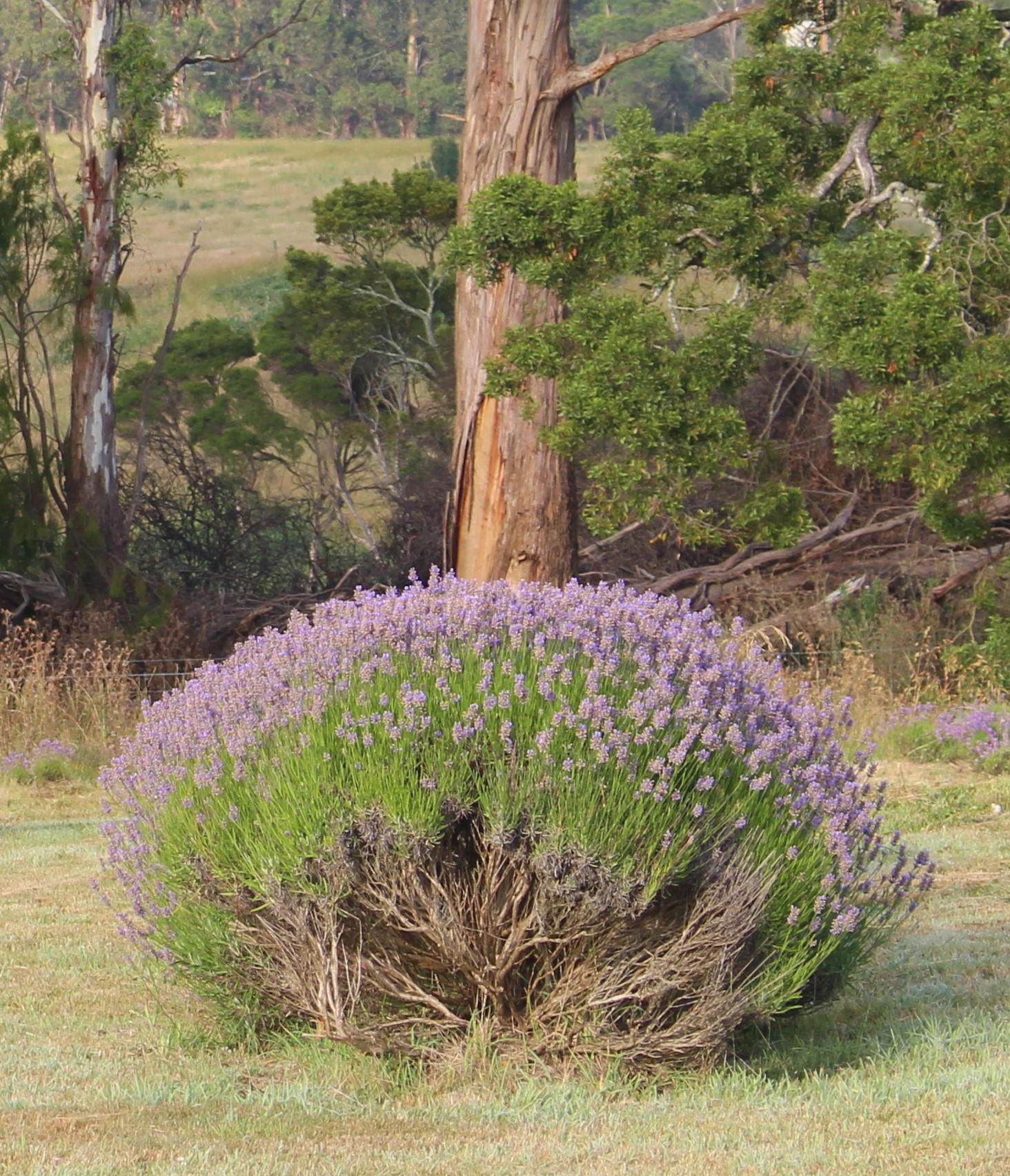Many customers ask us how to grow lavender. You can grow lavender in many areas of Australia, other than the most hot and humid regions.
There are many varieties and cultivars of lavender. Some are more heat or cold tolerant than others.
The Easiest Lavenders to grow are the stoechas or butterfly lavenders. These lavenders have the characteristic rabbit’s ears at the top of the flower and they perform well in a wide range of soils and temperatures. They are also superb landscape plants.
The hardest lavenders to grow are the English Lavender Angustifolias. They like poor soil, and require excellent drainage and temperate heat. This is why they grow well at our farm in Tasmania.
General Growing Requirements for Lavender
Lavender plants are simple souls requiring good drainage, slightly alkaline soils and lots of sun. Raised beds enriched with compost and a dressing of dolomite will produce vigorous, healthy plants. Do not overwater lavender! Lavenders don’t like wet feet and will die in waterlogged soil, or become mouldy.
Weeding: Lavenders hate weeds so keep beds weed free. You should alos mulch around the base of the plants to conserve soil moisture and suppress weeds.
Flowering Times
In spring, from September to December, Lavendula stoechas also known as French Lavender, Spanish Lavender or Butterfly Lavender, produces flowers in many colours including indigo, purple, pink and white.
Summer from late November through to the end of January, our Lavendula angustifolia or English lavender produces beautiful flowers in blues, whites, indigo, purples and pink. We harvest our lavender for both culinary and perfumery uses and distil our unique perfume oil from these special lavenders, making our showroom smell divine. Some stoechas are still flowering, plus some dentatas, in purple, blues and white. Our intermedias flower in summer too, putting on a fabulous display for several weeks. We gather and use the intermedias for both their flowers and for oil.
Autumn, from late February through to April, you’ll find Lavendula x Intermedia, Lavendula stoechas and Lavendula dentatas, showcasing soft blues and greys.
Winter, from April to June, you’ll find some Lavendula dentata, with lovely blue flowers and grey foliage, which look fabulous against a frosty landscape.
Fertilising and Maintenance: After flowering, remove the spent flower heads. Then lightly prune the bushes. Scatter a sprinkle of dolomite. lime or crushed eggshells around the base of each plant so that more flowers will form. In autumn prune the bushes back harder. You can chop up the prunings and use them as a mulch around the base of your plants.
Pests and Wildlife: Given the right conditions, lavenders are generally trouble free, and most pests are repelled by their smell. Wallabies and pademelons don’t generally eat lavender plants, although they will shelter under large bushes. A Southern Brown bandicoot has recently made his home under some large plants in the garden at Lavender House. We suspect the lavender aroma will help repel mites, fleas and other insects from his fur.
All lavenders beautify the landscape and bring bees and beneficial insects into your garden. They’re useful companion plants because they deter insects and other pests. And lavender honey is rather nice too!

